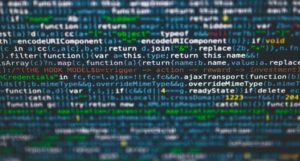Pandemic boost for Cornish learning must be used as a springboard to keep the language alive, study says

A research team are putting together a new ‘seaweed eating archive’ for Cornwall
The momentum brought to Cornish learning during the pandemic needs to be used as a springboard to encourage more people to take up the language, an expert has said.
Online courses and materials boosted efforts to keep Cornish alive, and this energy must not be allowed to disappear, according to Kensa Broadhurst, from the University of Exeter.
She has said the switch to online learning should be used to create new online and in-person activities and to bring together both new and existing speakers of the language.
In a new study Ms Broadhurst outlines how lockdowns benefitted the teaching of the Cornish language. Although Cornish teaching provision had been available outside Cornwall prior to this date, during the pandemic widespread access to the teachers based in Cornwall and elsewhere was now available to people anywhere in the world. As classes initially moved online it became apparent that there was a demand for them for students from outside Cornwall.
The research, published in the Proceedings of the Harvard Celtic Colloquium, also shows the challenges which exist to keep Cornish language learning alive. It warns offering Cornish in secondary schools would require a vast increase in resources and teacher training, both of which currently rely heavily on the voluntary sector within Cornish adult education. For Cornish to succeed at primary level, it needs both the support of headteachers and a teacher who is able either to speak Cornish, or to run the sessions.
Ms Broadhurst said: “For Cornish to succeed within the state education system, it requires status, a place within the school day, properly resourced and paid peripatetic teachers, or resources and retraining for existing teachers within schools. For Cornish to be attractive to both students and teachers at a secondary level it needs to have a purpose beyond the classroom. This could include creating opportunities either for examination success or for further use beyond secondary education– within higher education or the workplace.”
“As yet, Cornish does not have enough of a stronghold within the primary system in Cornwall either within curriculum time, or as part of a club, due to inadequate manpower provision. However, if school staff become more willing and confident to deliver the language, and less reliant on outside providers, uptake should continue to grow. A key marker of the success of Cornish in primary schools will be the acceptance of Cornish as a modern or ancient foreign language.”
The study cites survey data showing in 2021 there were 217 Cornish language learners – 85 beginners and 65 intermediate. There were fifty-four students at a high level and twenty-three students were fluent speakers who continue to attend classes. A similar survey in 2014 reported forty-four beginners and thirty intermediate students.
Ms Broadhurst said: “The year 2020 witnessed a concerted effort to support those teaching Cornish within adult education, both by providing training, especially in online teaching and through the production of high-quality, modern resources which have been made freely available. The modernisation of Cornish language teaching and teaching resources could serve to break this negative cycle of expectation.
“Efforts are currently underway to modernise and professionalise the teaching of Cornish in adult education, to increase the availability of the language at the pre-school level, and to provide some availability at primary level. The language movement now needs to consider what benefits it can offer to secondary, further, and higher education. A new GCSE might be possible, which in turn could lead to A Level provision. However, the availability of teachers capable of teaching at these levels and the quality of educational resources remains one of the biggest problems. Remedying this would necessitate the provision of a training programmes for teachers and a wide variety of language materials.
“Through seeking to provide as diverse a range of education, and educational materials, it should be possible to preserve the language as a living being, fit for purpose in everyday situations and to better reflect the purposes for which it was originally used. None of these issues will be resolved overnight.”



